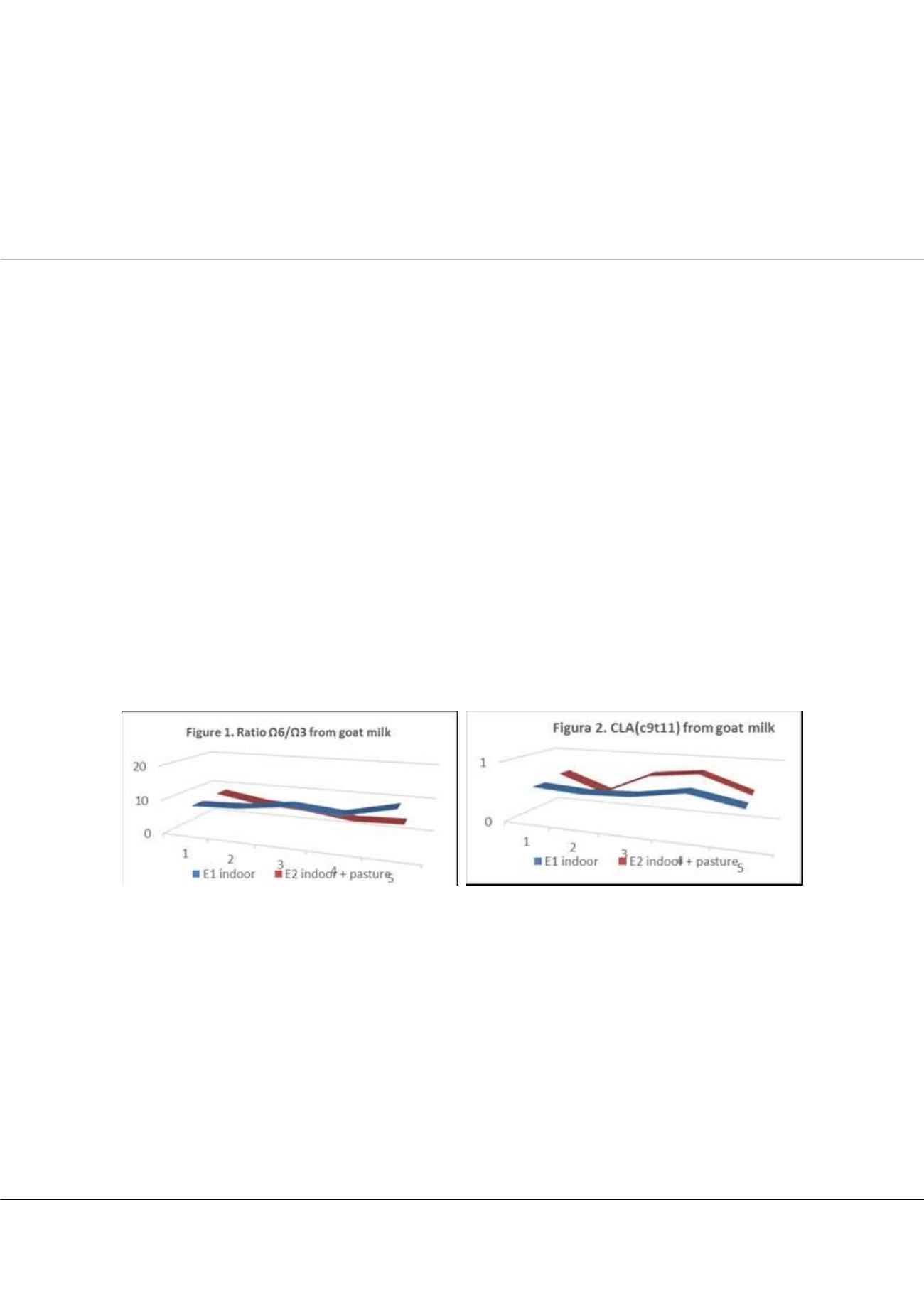

Page 63
Notes:
conferenceseries
.com
Volume 8, Issue 5 (Suppl)
J Chromatogr Sep Tech, an open access journal
ISSN: 2157-7064
Chromatography 2017
August 07-09, 2017
August 07-09, 2017 | Rome, Italy
4
th
World Congress on
Chromatography
Goat milk polyunsaturated fatty acids determination by gas chromatography
Mariana Ropota
1
, Margareta Olteanu
1
, Ilie Voicu
1
and
Angela Sava
1,2
1
INCDBNA-IBNA, Romania
2
USAMV-Bucharest, Romania
T
he differences in the fatty acids content of the goat milk were determined by gas chromatography in two groups of
Carpatina×Saanen (F3) goats (n=30), in the same physiological state (second lactation), fed fromApril to August according
to the intensive system (E1 indoor) or extensive system (E2 indoor + pasture). Group 1 received briquettes made of hays and
concentrates, alfalfa hay and barley straws. Group 2 received a supplement of alfalfa hay plus concentrates (corn and barley).
Ten milk samples from each group were collected monthly. The method involved the chemical processing of the samples by
transformation in fatty acids methyl esters (FAME), followed by separation of the components in the chromatographic column,
fatty acids identification by comparison with standard chromatograms and quantitative determination of FAME (g FAME of
% g Total FAME). Reference materials (CRM) were: Standard solution of methyl fatty acids SUPELCO 37 Component FAME
Mix; 10mg/mL and; infant/adult nutritional formula- standard reference material 1849. The method was validated “in house”,
determining the following parameters: accuracy, fidelity, reproducibility, sensitivity, detection limit, quantification limit and
tracing in agreement with SR EN ISO/CEI 17025:2005. The experimental determinations showed that Ω6/Ω3 ratio ranged
from 7.93 to 12.44 in E1, and from 3.62 to 8.32 in E2. CLA (conjugated linoleic acid) level increased in the middle period
of sampling (months 2, 3 and 4), from 0.52% to 0.68% in group 1, and from 0.35% to 0.80% in group 2. In the first and last
months, CLA level decreased from 0.57% to 0.53% in group 1, and from 0.63% to 0.52% in group 2, but the average CLA value
for the whole experimental period was 6.02% in group 2, compared to just 5.7% in group 1.
Biography
Mariana Ropota completed her PhD at Bucharest University. She is coordinating the compartment of gas chromatographic analyses within the laboratory of
chemistry and nutrition physiology of the National Research-Development Institute for Animal Biology and Nutrition-IBNA-Balotesti. She is a Researcher in
Analytical Chemistry. She has published more than 20 papers in national and international scientific journals, rated by ISI or by other databases.
m.ropota@yahoo.comMariana Ropota et al., J Chromatogr Sep Tech 2017, 8:5(Suppl)
DOI: 10.4172/2157-7064-C1-032
















